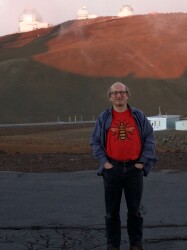BibTex format
@article{Zavala:2017:mnras/stw2630,
author = {Zavala, JA and Aretxaga, I and Geach, JE and Hughes, DH and Birkinshaw, M and Chapin, E and Chapman, S and Chen, C-C and Clements, DL and Dunlop, JS and Farrah, D and Ivison, RJ and Jenness, T and Michalowski, MJ and Robson, EI and Scott, D and Simpson, J and Spaans, M and van, der Werf P},
doi = {mnras/stw2630},
journal = {Monthly Notices of the Royal Astronomical Society},
pages = {3369--3384},
title = {The SCUBA-2 Cosmology Legacy Survey: the EGS deep field - I. Deep number counts and the redshift distribution of the recovered cosmic infrared background at 450 and 850 mu m},
url = {http://dx.doi.org/10.1093/mnras/stw2630},
volume = {464},
year = {2017}
}

